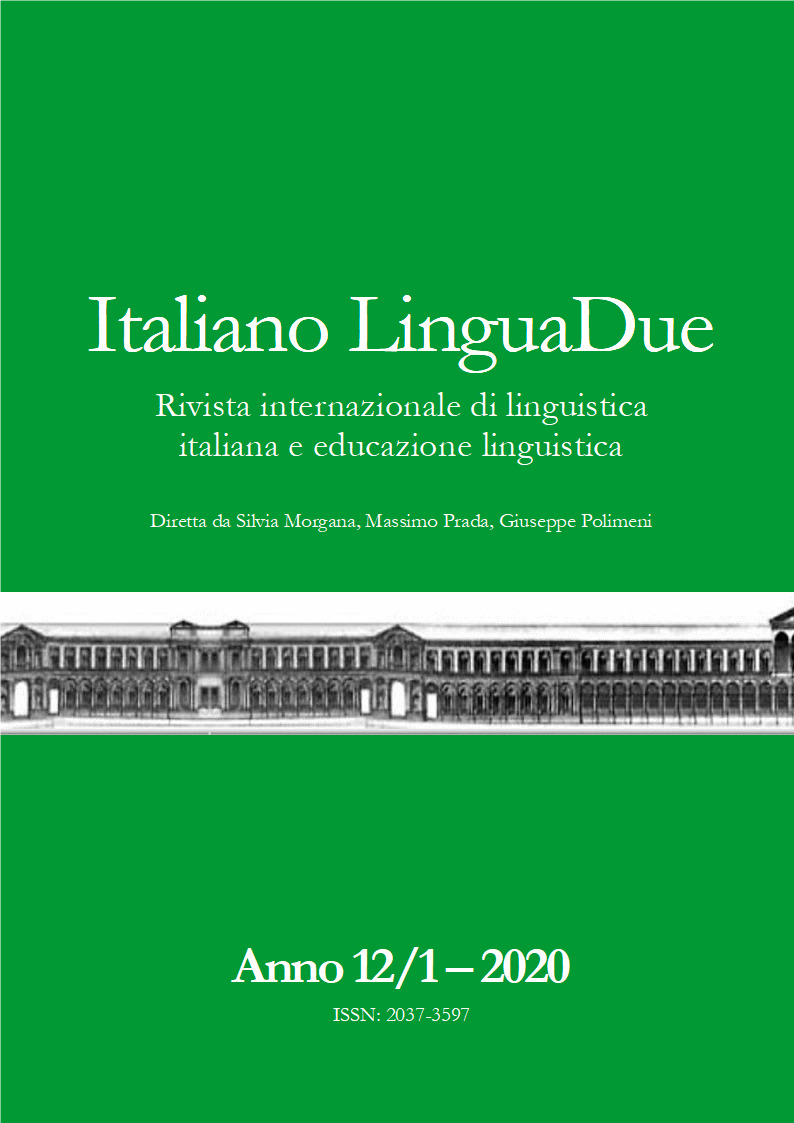PER UNA TIPOLOGIA DELL’ERRORE SULLA BASE DI ELABORATI SCRITTI IN LINGUA ITALIANA DI STUDENTI L1 E L2
DOI:
https://doi.org/10.13130/2037-3597/14005Abstract
Viene qui esaminato un campione di elaborati scritti di studenti universitari italiani e di stranieri alle prese con la certificazione di italiano L2, alla ricerca degli errori e delle criticità più ricorrenti. Viene inoltre stilata una tipologia degli errori e vengono poi analizzati e commentati i casi più interessanti. Dalla ricerca emerge come gli elaborati italiani presentino i problemi maggiori sul terreno della pragmatica, della sintassi e della testualità, oltreché nella punteggiatura, che di quei tre aspetti è l’interfaccia. La lingua degli elaborati degli studenti universitari qui analizzata mostra, in misura maggiore rispetto a quella degli elaborati dei madrelingua non italiani, molte delle caratteristiche attribuite (da Raffaele Simone e da altri) al cosiddetto stile non proposizionale e additivo, con numerosi tratti di italiano popolare, o dei semicolti. Si commentano anche i risultati di un questionario che denotano lo scarso grado di consapevolezza metalinguistica degli studenti universitari.
A typology of errors in Italian language essays written by L1 and L2 students
A sample of texts written by Italian university students and foreign people (Italian L2 speakers) attending an Italian L2 course was analyzed. The aim of the research was to draw up a list of the most recurrent errors and critical issues in these texts. A typology of errors was also compiled and the most interesting cases were analyzed and commented on. The research shows that the Italian writings present the greatest problems in the field of pragmatics, syntax and textuality, as well as punctuation, which is the interface of the previous three aspects. The language of the texts by L1 students analyzed showed, to a greater extent than L2 speaker-writers, many characteristics of the so-called “non-propositional” and “additive” style (according to Raffaele Simone and others), with numerous features from popular Italian, i.e. semi-illiterate Italian. The results of the survey are also discussed, denoting the low level of metalinguistic awareness of university students.




